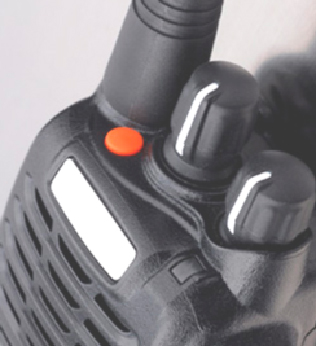Man Down and Lone Worker Radios
Lone Working - The Law.
Although there is no definitive prohibition on a company allowing staff to be working on their own, under the Health and Safety at Work Act (1974) and the Management of Health and Safety Regulations 1999, it is the responsibility and duty of the Employer to assess the risks associated with an Employee working alone and to deal with any health and safety risks before allowing staff to work alone.
Of course in many environments and job functions it is perfectly safe to work alone, but the law states the duty of the Employer towards lone working staff whether they work in an office or shop alone, or in a factory where they may be with many other people, but the job function does not allow close interaction or monitoring.
The onus of the law is for the Employer to assess the risks, put measures into effect to avoid or control risks by implementing control instruction, training, supervision and protective equipment.
Two-Way Radio as a Protective Equipment Solution:
Two Way Radio solutions offer an ideal form of protective equipment, allowing an increase in operational efficiency by using as a communication tool, and having the additional safety benefits and fulfilling the Employers “duty of care” with inbuilt “Panic Button Alarms”, “Man-Down” Alarms, and “Lone Worker Alarms”. Their operation is typically as below:

PANIC BUTTON
A Panic Button is the simplest and sometimes the most effective way of using a radio to summon assistance.
Most radios which have this feature deploy a top mounted Panic button which can be programmed to send an
alarm signal when pressed. Some radios transmit a beep or alarm signal over the air, which does not have any
identifier of the alarming radio, and the more sophisticated units use “5 Tone”, “7 Tone”, “MDC1200” or similar
signalling systems to allow the identity number (ID) of the radio in panic mode to be identified.
Most Digital Radios have a Panic Button feature and their Digital ID is sent.
It is important to understand that with all two way radios with Panic Buttons, Alarms, Lone Worker or Man-Down alarms it goes without saying that you will need some method of decoding the Alarm signals. This can be done with a radio with either "5tone", "7tone" or "MDC1200" in analogue radios, and with Digital Radios.
You need to see what sort of alerts you need? It is cost effective to use a radio that will decode these alarms but just "beeps", but that does not give you the specific Identity (ID) of the person who has activated that alarm condition. A Radio with an LCD and decoding capability will be able to show in the display the decoded alarm ID, but at the added cost associated, and to date there is only one radio - the DR5100 which can decode the alarm signals and annunciate the number of the alarming radio. See DR5100 for more details.

MAN-DOWN ALARM
Man-Down is either inbuilt or an option on some models of radios. Most Man Down systems use a non
mercury tilt switch as the "actuator" for the function which operates when the radio is tilted beyond around
45 degrees from vertical, starting a timer and a local warning, normally an audible beeping sound.
The time is normally pre-programmed and is normally simply reset by setting the radio back to its normal
vertical position.
If the user does not reset the radio back to vertical, the radio will start a full alarm condition. Once a Man-Down Alarm has been activated and an alarm signal sent, depending on how the radio is programmed it will resend either a set number of times or continuously.
The Alarm Signal is the same alert signal or ID as a Panic Button activation.
The time the radio is allowed to remain in a non vertical position is a pre-programmed function, normally between 10-300 seconds, with an additional "pre-alert" time function.
Red Radio have vast experience of designing and supplying systems incorporating Man-Down alarms and are happy to discuss requirements in more detail.

LONE WORKER ALARM
When it is sometimes unpractical to use a Man-Down Alarm, a Lone Worker Alarm allows effectively supervisory
monitoring of a Lone Worker by forcing the user to react to an “Inquire”.
The Alarm operates when the radio user fails to press a button after a pre-programmed time period.
The user is alerted every say 30 minutes (programmable time) to respond, normally by simply pressing a button and if they fail to respond it is followed by a full Alarm condition.
The Radio Unit sends out an alarm signal, normally a “5 Tone” /Databurst to identify the user in distress at the appropriate guardian radio or control point.

